CRUSADER
Emerald Member
Our 2 year Licence comes to an end in Dec 18, so this collaboration with the Archies to find out what is in the fields around an old Medieval Abbey will sadly finish. Therefore we want to make a good last effort.
We already discovered an unknown Roman Pottery Kiln Site (rare, our only 1), & an early Saxon Settlement from about 600AD, as well as the medieval activity that you would expect. We think we have disproved the medieval village theory as well.
As we are working with the Archies we plot the big Roman nails (or are they 17th/18th C!!!) as well as the broken grey-ware kiln bars. (not all the tons of small roman nails we dig!)
I was working Fri & Cru'dad did a short 4 run grid on the Roman Site & got 3 scrappies & a Viking Penny!!! He then wondered the Saxon Site & got a Saxon Sceat! Crazy short session.
Today was about continuing the gridding on the Roman Site & leaving the Saxon Site until later (different field being drilled later).
We did 6 Hours today (plus Cru'dads 3 & a bit Fri);
17 Roman Bronze Coins - 1 odd follis with the fallen horse the wrong way - Cru'dad will research! UPDATE FROM THE BRITISH MUSEUM;
''This is an odd one! There aren’t any listed that I can find immediately with the soldier spearing to the right. How big is the coin? I think it likely that this is a copy too rather than an official coin – they can often be quite large and well struck. There are examples in the BM, although typically they are the usual way around. It would be great to see it in the flesh next time we hand coins over!''
Lead Spindal Whorl
Roman Ring (bezel)
Roman Bracelet bit
2 Medieval Lead Tokens - These unusual tiny types must be associated with the Abbey (we find them no-where else)
Folded Hammered Penny of Ed III?
Hammered Farthing of Edward I
Viking Penny circa 890 AD, historic coin that memorizes the death of St Edmund who they tortured to death some years previously.
Saxon Sceat AD710-60 (the museum thinks it might be an imitation of a BIa type)
Now that's how you give a field a send off. (Still more to do)
(Still more to do)
We already discovered an unknown Roman Pottery Kiln Site (rare, our only 1), & an early Saxon Settlement from about 600AD, as well as the medieval activity that you would expect. We think we have disproved the medieval village theory as well.
As we are working with the Archies we plot the big Roman nails (or are they 17th/18th C!!!) as well as the broken grey-ware kiln bars. (not all the tons of small roman nails we dig!)
I was working Fri & Cru'dad did a short 4 run grid on the Roman Site & got 3 scrappies & a Viking Penny!!! He then wondered the Saxon Site & got a Saxon Sceat! Crazy short session.

Today was about continuing the gridding on the Roman Site & leaving the Saxon Site until later (different field being drilled later).
We did 6 Hours today (plus Cru'dads 3 & a bit Fri);
17 Roman Bronze Coins - 1 odd follis with the fallen horse the wrong way - Cru'dad will research! UPDATE FROM THE BRITISH MUSEUM;
''This is an odd one! There aren’t any listed that I can find immediately with the soldier spearing to the right. How big is the coin? I think it likely that this is a copy too rather than an official coin – they can often be quite large and well struck. There are examples in the BM, although typically they are the usual way around. It would be great to see it in the flesh next time we hand coins over!''
Lead Spindal Whorl
Roman Ring (bezel)
Roman Bracelet bit
2 Medieval Lead Tokens - These unusual tiny types must be associated with the Abbey (we find them no-where else)
Folded Hammered Penny of Ed III?
Hammered Farthing of Edward I
Viking Penny circa 890 AD, historic coin that memorizes the death of St Edmund who they tortured to death some years previously.
Saxon Sceat AD710-60 (the museum thinks it might be an imitation of a BIa type)
Now that's how you give a field a send off.
 (Still more to do)
(Still more to do)Attachments
Last edited:
Upvote
36



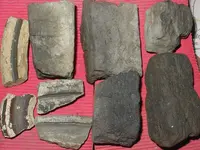
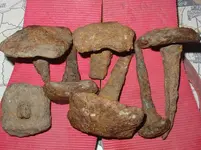
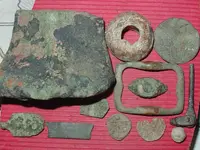
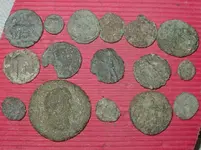
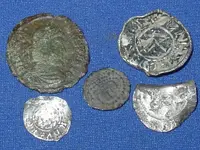
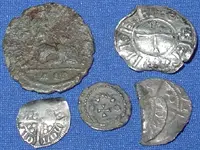

 But i was more referring to the Sceat. Why do they think copy here too?
But i was more referring to the Sceat. Why do they think copy here too?
